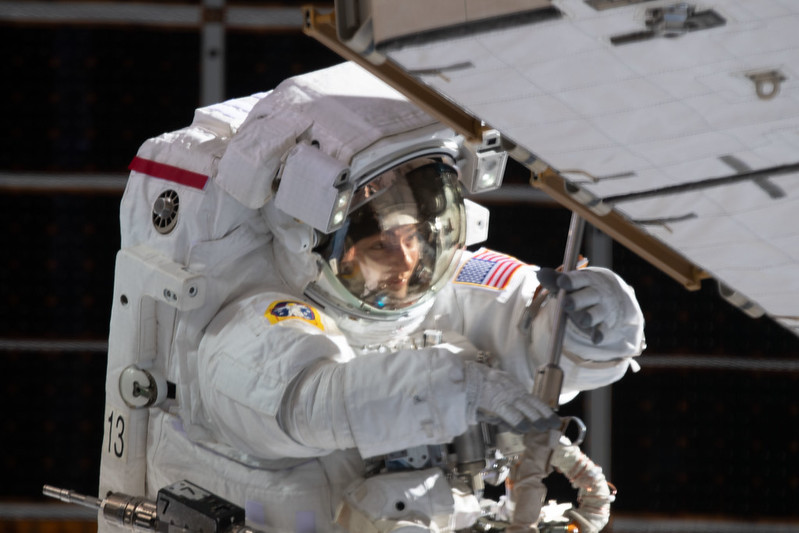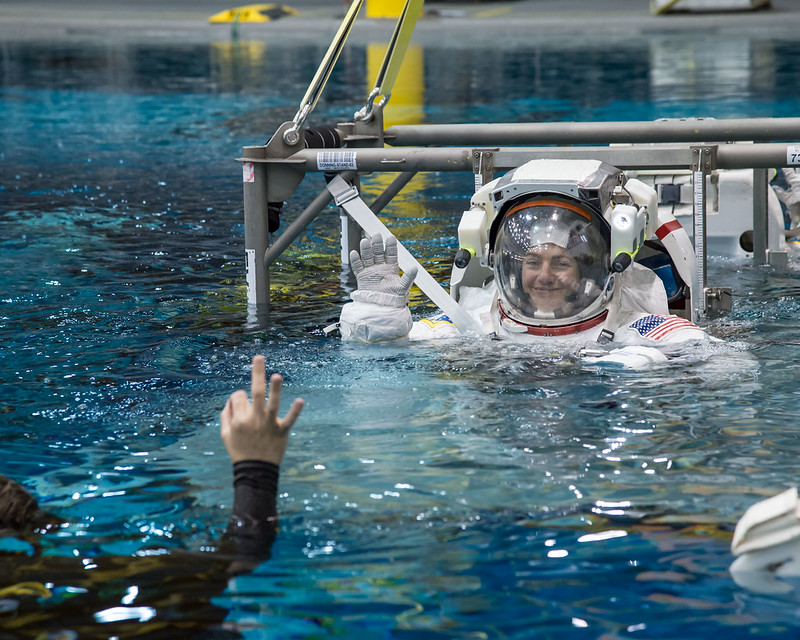PROVIDENCE, R.I. [Brown University] — When she was in first grade, Jessica Meir drew a picture of what she wanted to be when she grew up. She drew herself in a spacesuit, standing beside the American flag of the surface of the Moon.
That childhood dream just took one giant leap toward reality.
On Dec. 9, NASA announced that Meir, a Brown Class of 1999 alumna, is one of 18 astronauts selected for the agency’s new human exploration program on the Moon, dubbed Artemis. NASA hopes to start flying the first Artemis missions next year, with the first crewed lunar landing happening as early as 2024.
Meir said that her selection felt “a little bit surreal,” but she’s excited to be part of a mission that marks a new chapter in NASA’s history.
“The next step is the Moon,” Meir said in a Dec. 11 interview. “We’re going to establish a presence there, we’re going to learn from that, and then we’re going to propel on to Mars from there. So it is absolutely a tremendous time to be a part of all of this.”
Meir, who was initially selected for the astronaut corps in 2013, completed her first mission to space earlier this year. She spent more than 200 days working aboard the International Space Station during that mission, making history with crewmate Christina Koch by successfully completing the first all-woman spacewalk. Now, both Meir and Koch begin training to walk on the Moon.

The Artemis team is comprised of nine men and nine women with a wide range of personal and professional backgrounds. Meir says that the talent and diversity of the team will be key to the program’s success.
“If you want to solve a problem... you’re going to have a more creative and I think much more optimal solution if you have many different ways of thinking about it,” Meir said. “So including people have all of these diverse backgrounds and skillsets and ways of thinking makes us a much, much stronger team.”
That approach toward problem-solving is inherent in research and teaching at Brown, where Meir — as an undergraduate who concentrated in biology — got early lessons in the geology of the Moon as well as an initial connection with NASA’s space program. She took a class with Jim Head, a planetary scientist at Brown, who has conducted pioneering research in lunar geology and helped to train astronauts who explored the Moon during the Apollo program.
“During her tenure at Brown, she took my introductory Geo 5 ‘Earth, Moon and Mars’ course and got the highest grade ever,” Head said. “It has been a pleasure to continue to work with Jessica and her astronaut colleagues in Houston during their training period, and we all look forward to accelerating this training as these exceptional candidates prepare to explore the South Polar region of the Moon.”
